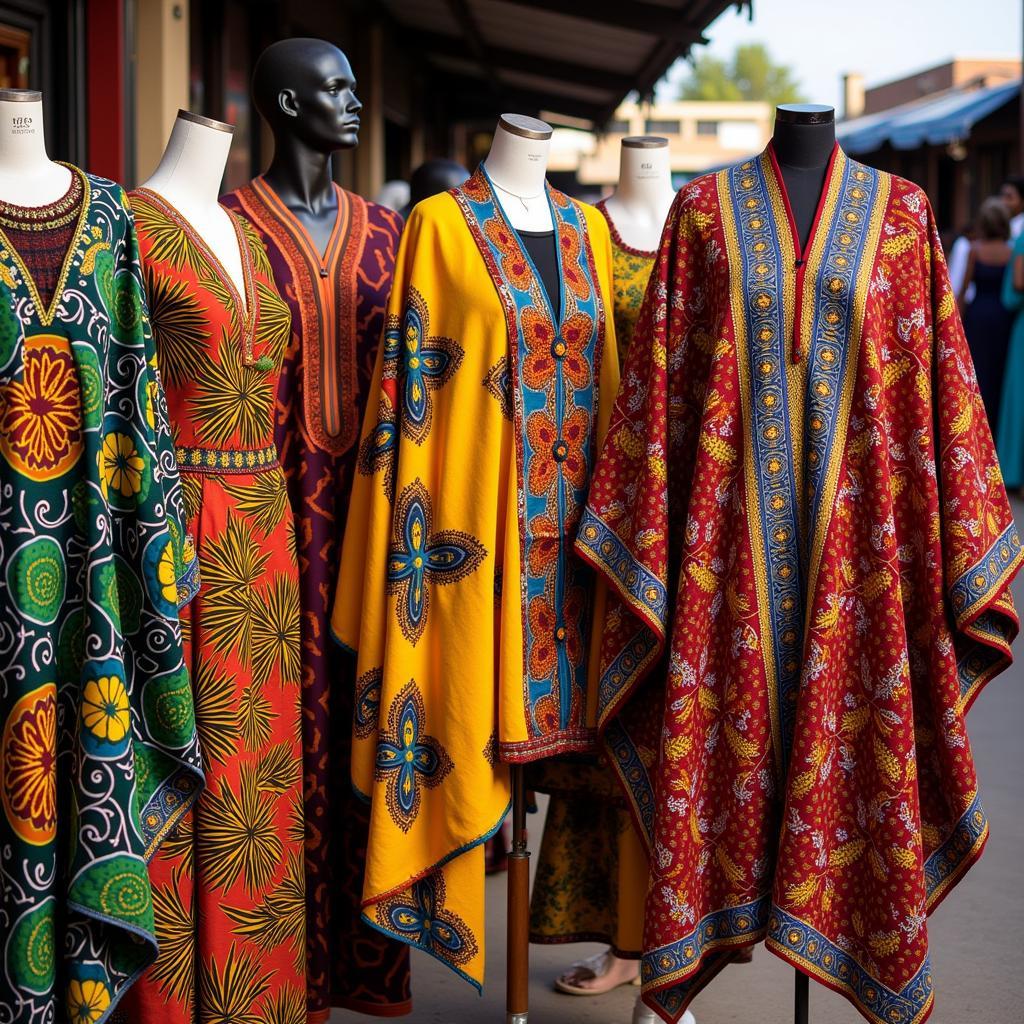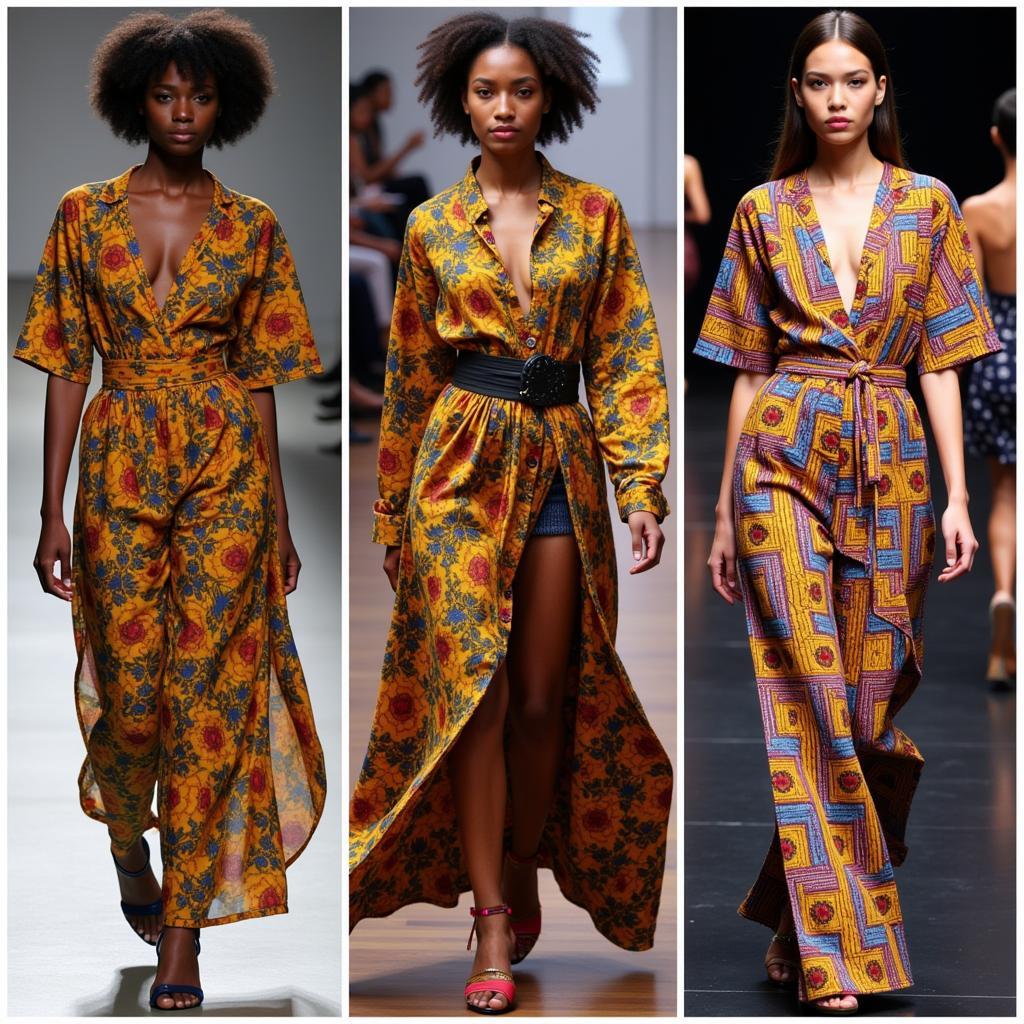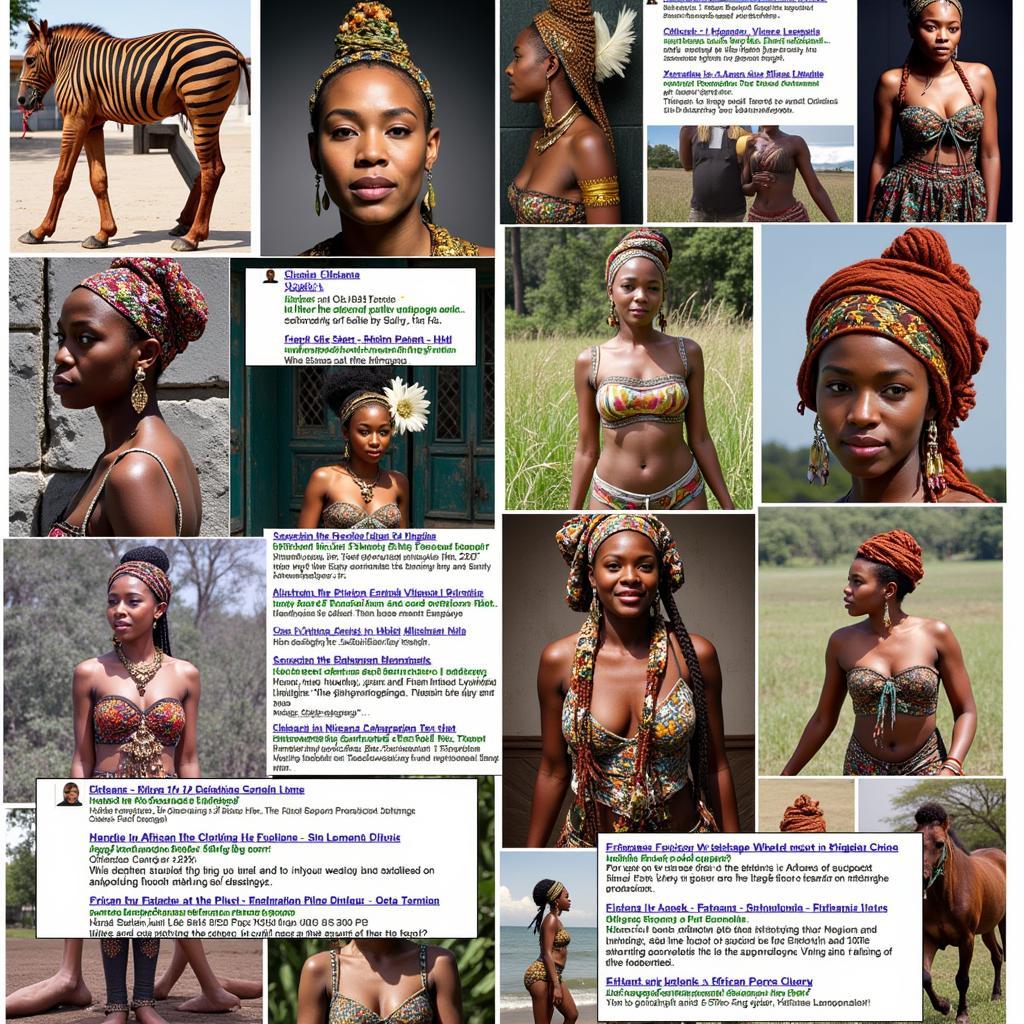Exploring the Vibrant World of African Dressing Style
African Dressing Style is a captivating journey through a kaleidoscope of cultures, traditions, and artistic expression. From the intricate patterns of West African kente cloth to the bold beadwork of the Maasai, African clothing tells stories of heritage, status, and individuality. This article dives deep into the diverse and fascinating world of African dressing style, exploring its rich history, regional variations, and modern interpretations.
A Continent of Colors and Cloth: An Overview of African Dressing Style
African clothing is as diverse as the continent itself. Each region, country, and even tribe boasts its unique style, reflecting their specific environment, history, and cultural values. While generalizations are difficult, a common thread throughout is the use of vibrant colors, bold patterns, and handcrafted embellishments. Early forms of African dressing often utilized natural materials like animal hides and bark cloth, later evolving to incorporate woven fabrics like cotton and silk. These fabrics are frequently adorned with intricate embroidery, beadwork, or painted designs, showcasing the incredible artistry of African artisans.
From the flowing boubous of North Africa to the tailored suits of contemporary designers, African dressing style is constantly evolving, blending tradition with modern influences. Whether it’s a ceremonial garment passed down through generations or a contemporary street style look, African fashion is a powerful expression of identity and pride.
Regional Variations in African Dressing Style: A Tapestry of Traditions
Africa’s vastness translates into a rich tapestry of regional dressing styles. North Africa, influenced by Islamic traditions, often features flowing robes and intricate headwear. Think of the djellaba of Morocco or the gandoura of Algeria. These garments offer protection from the sun and sand while showcasing beautiful embroidery and embellishments. Moving south, West Africa explodes with color and pattern. Ghanaian kente cloth, with its vibrant geometric designs, is perhaps the most recognizable example, but the region is also known for its elaborate tie-dye techniques and indigo-dyed fabrics.
South African dressing style showcases a melting pot of influences, reflecting the country’s diverse cultural heritage. From the traditional attire of the Zulu and Xhosa people to the contemporary designs emerging from vibrant urban centers, South African fashion is a dynamic blend of old and new. East Africa is known for its bright, patterned khangas, worn by both men and women, often signifying social status and belonging.
 East African Kanga Styles Showcase Vibrant Colors and Patterns
East African Kanga Styles Showcase Vibrant Colors and Patterns
Further south, distinctive prints and bold accessories are characteristic, reflecting the rich cultural heritage of Southern Africa.
The Modern Evolution of African Dressing: Tradition Meets Innovation
African dressing style isn’t static. Contemporary African designers are taking traditional elements and reimagining them for the modern world. They are incorporating new fabrics, silhouettes, and techniques, creating innovative designs that celebrate their heritage while pushing the boundaries of fashion. This fusion of tradition and innovation has propelled African fashion onto the global stage, with designers showcasing their collections at international fashion weeks and gaining recognition for their unique aesthetic. From haute couture gowns to ready-to-wear pieces, modern African fashion offers a fresh perspective on style and identity.
 Modern African Fashion Designs Blend Tradition with Innovation
Modern African Fashion Designs Blend Tradition with Innovation
What are some common African hairstyles?
African hair dressing encompasses a wide range of styles, from braids and cornrows to twists and afros, each reflecting unique cultural traditions and personal expression.
The Power of Symbolism in African Dress: More Than Just Clothing
African dressing is often imbued with deep symbolic meaning. Colors, patterns, and even the way a garment is worn can communicate social status, marital status, or religious affiliation. For example, certain colors might be reserved for royalty or religious leaders, while specific patterns might represent clan or family lineage. Understanding the symbolism behind African clothing adds another layer of appreciation for the rich cultural heritage it embodies.
South African dressing encompasses a diverse range of styles, from traditional attire like the isishweshwe fabric worn by Xhosa women, to contemporary designs reflecting the country’s multiculturalism.
Conclusion: Embrace the Vibrancy of African Dressing Style
African dressing style is a vibrant celebration of culture, identity, and creativity. From the intricate patterns of traditional garments to the innovative designs of contemporary fashion, African clothing tells a compelling story of a continent rich in history and tradition. Whether you’re drawn to the bold colors, the intricate beadwork, or the symbolic meaning behind each piece, exploring African dressing style is a journey of discovery and inspiration.
FAQ
- What is the most common fabric used in African clothing? Cotton is widely used, but other materials like silk, linen, and wool are also prevalent.
- What are some popular African accessories? Jewelry made from beads, bone, and metal, as well as headwraps and scarves, are common accessories.
- Where can I buy authentic African clothing? You can find authentic pieces online, in specialty stores, or by supporting African designers directly.
- How can I incorporate African dressing style into my wardrobe? Start with small accessories or incorporate African-inspired prints and colors into your existing style.
- What is the significance of headwraps in African culture? Headwraps can signify marital status, religion, or simply be a fashionable accessory.
Commonly Asked Questions about African Dressing
What are some tips for incorporating African prints into my existing wardrobe?
How can I identify authentic African fabrics and garments?
What are the key differences between traditional and contemporary African fashion?
More Resources on African Life
Explore more about African Indian dressing and the influence of Indian culture on African fashion.
Discover the intricacies of South African dressing and its unique blend of cultural influences.
Contact Us
For any inquiries or assistance, please contact us at Phone Number: +255768904061, Email: kaka.mag@gmail.com or visit our address: Mbarali DC Mawindi, Kangaga, Tanzania. We have a 24/7 customer service team.


